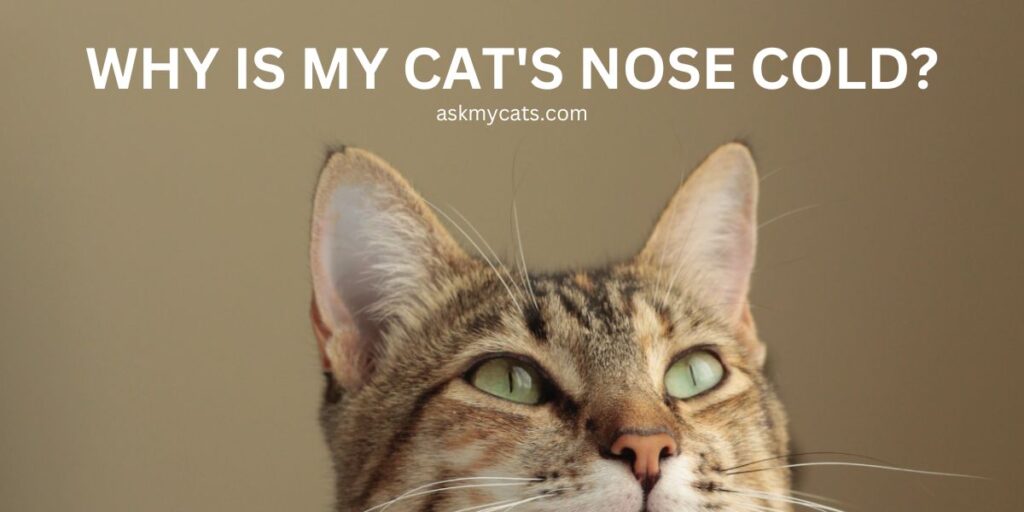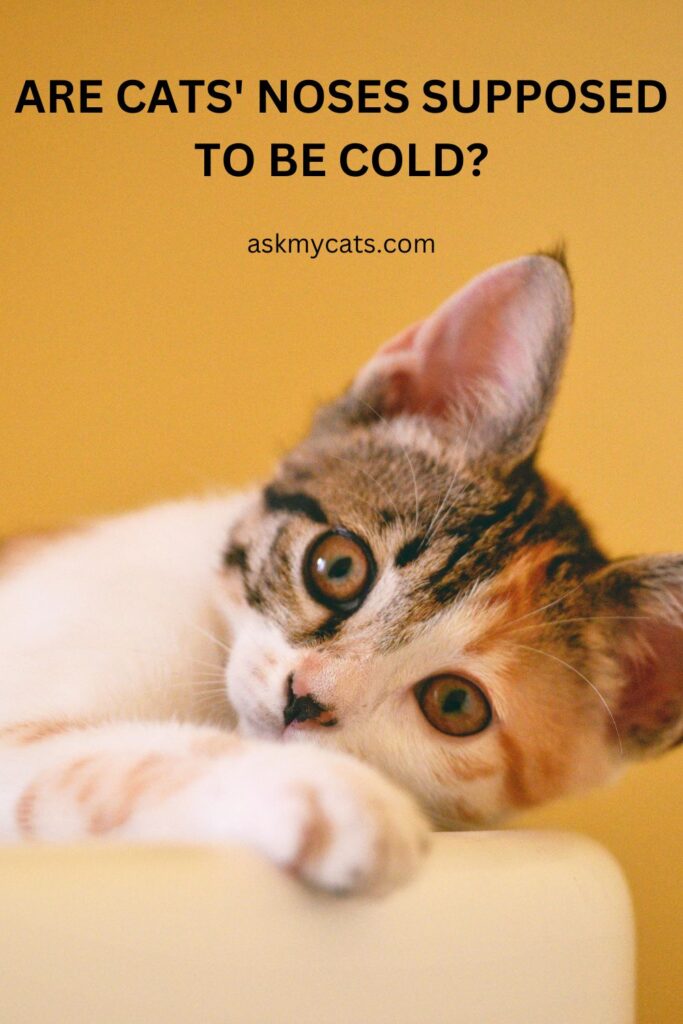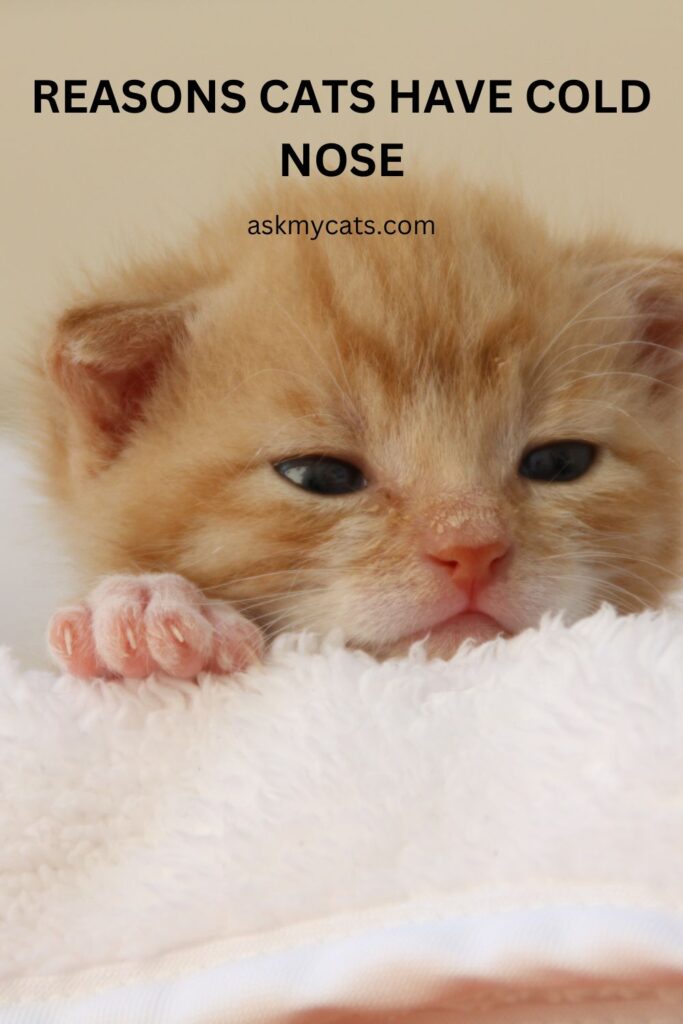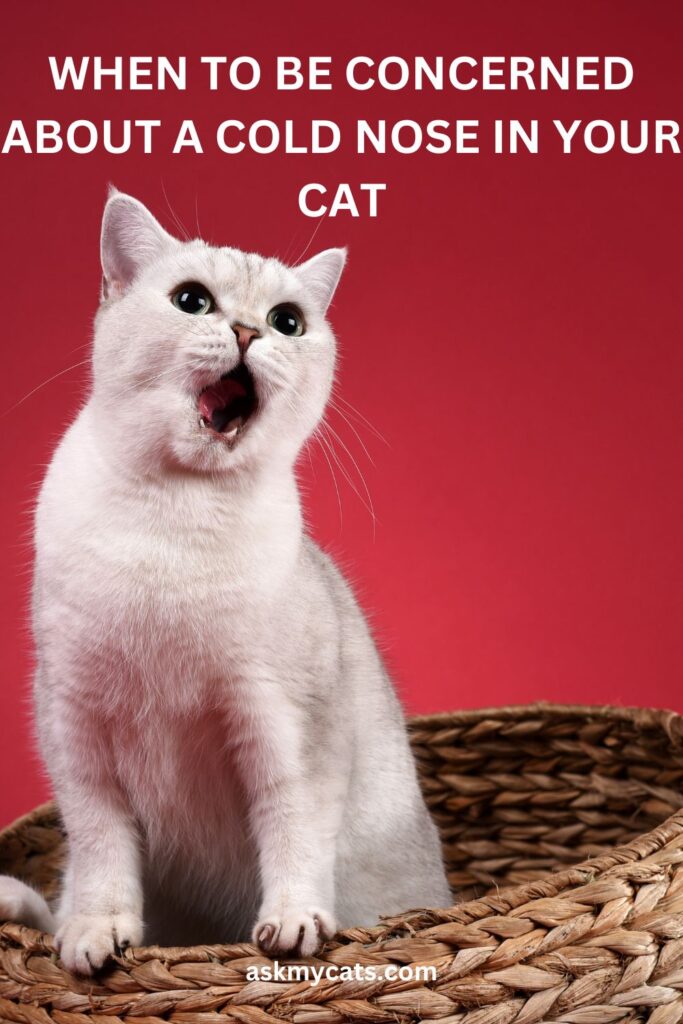Have you ever found yourself petting your beloved feline friend and wondering, “Why is my cat’s nose cold?” While it may seem puzzling at first, there’s a fascinating explanation behind this seemingly chilly phenomenon.
A cat’s nose temperature can vary from our own, and understanding the reasons behind it can provide valuable insights into their overall health and well-being.
In this article, we’ll delve into the normal temperature range for a cat’s nose, explore the potential reasons behind their chilly snout, and address when a cold nose might be a cause for concern.
Key Takeaways
- Temperature range for a cat’s nose varies but generally falls within slightly cool or close to the surrounding skin.
- Factors such as environment and activity level can influence a cat’s nose temperature.
- Cold nose alone is not a reliable indicator of health; observe other signs like behavior and appetite.
- Extreme coldness, changes in behavior, or persistent abnormalities may require veterinary attention.
- Checking your cat’s nose temperature can provide a quick health assessment, but it’s not diagnostic.
- If your cat’s nose feels excessively cold or below normal, take immediate action for hypothermia.


Give Your Cat the Perfect Day
Get the Free Ebook!
Are Cats’ Noses Supposed to Be Cold?

Yes, it is normal for a cat’s nose to be slightly cool to the touch. Cats have a unique physiological feature called the “naso-mucosal region” in their noses, which helps regulate their body temperature.
This region contains a dense network of blood vessels that assist in cooling or warming the cat’s body as needed. As a result, a cat’s nose can often feel cooler than the surrounding skin.
However, it’s important to note that the temperature of a cat’s nose alone is not a reliable indicator of its overall health.
It’s just one aspect to consider among other factors such as eating habits, behavior, coat condition, and overall well-being. If you have concerns about your cat’s health, it’s always best to consult with a veterinarian for a proper evaluation.
Understanding the Ideal Temperature Range for a Cat’s Nose
There isn’t a specific ideal temperature range for a cat’s nose, as it can vary slightly from cat to cat.
However, a cat’s nose generally falls within the range of being slightly cool to the touch. A healthy cat’s nose may feel moist and have a temperature close to the surrounding skin, or it may be slightly cooler.
It’s important to note that the temperature of a cat’s nose can change based on environmental factors, such as room temperature or the cat’s level of activity.
For example, if a cat has been lying in a warm spot, its nose may feel warmer than usual. Additionally, if a cat has been outside in cold weather, its nose may feel cooler than usual.
While a cool or slightly moist nose is often considered normal for a cat, it’s essential to assess the overall health and behavior of your cat to determine if there are any underlying health issues.
If your cat’s nose is excessively dry, or cracked, or there are other concerning symptoms present, it’s best to consult with a veterinarian for a thorough examination. They will be able to provide you with the most accurate assessment of your cat’s health.
Interesting Read: Why Do Cats Have Wet Noses?
Normal Temperature Range of a Cat’s Nose: What’s Considered Healthy?
A cat’s nose temperature can vary depending on factors such as the cat’s activity level, the surrounding temperature, and individual variation.
Generally, a healthy cat’s nose falls within a range that is close to the surrounding skin temperature. It may feel slightly cool or warm to the touch.
In cats, the normal body temperature ranges from 100.5°F to 102.5°F (38.0°C to 39.2°C). The temperature of a cat’s nose is typically not a reliable indicator of its overall health.
It’s more important to observe other signs of well-being, such as the cat’s behavior, appetite, energy level, coat condition, and any other visible symptoms.
If you notice any abnormalities in your cat’s nose, such as extreme dryness, cracking, swelling, discharge, or changes in color, it could indicate an underlying health issue.
It’s best to consult with a veterinarian if you have concerns about your cat’s nose or overall health. They will be able to provide a proper evaluation and guidance based on their expertise.
Reasons Cats Have Cold Nose

There are a few reasons why cats may have a cold nose:
- Blood vessel regulation: Cats have a unique circulatory system in their noses called the “naso-mucosal region.” This region contains a dense network of blood vessels that help regulate the cat’s body temperature. The blood vessels in this area can constrict or dilate to cool or warm the body as needed, which can result in a slightly cooler nose.
- Environment: The temperature of a cat’s nose can be influenced by the surrounding environment. If a cat has been in a cool or cold environment, its nose may feel colder to the touch. Similarly, if a cat has been lying in a warm spot, its nose may feel warmer than usual.
- Activity level: Cats that have been engaging in physical activity or are excited may have increased blood flow to their extremities, including their nose. This increased blood flow can make the nose feel slightly warmer.
It’s important to note that a cold nose alone is not a reliable indicator of a cat’s health. It’s just one aspect to consider among other factors.
When to Be Concerned About a Cold Nose in Your Cat

A cold nose in itself is not usually a cause for concern in cats. As mentioned earlier, a cat’s nose temperature can vary depending on factors such as activity level, environment, and individual variation.
However, there are some situations where a cold nose, along with other symptoms, may indicate an underlying health issue:
- Extreme coldness: If your cat’s nose feels excessively cold to the touch, much colder than the surrounding skin or usual temperature, it could be a sign of poor circulation or hypothermia. Hypothermia is a condition in which the body temperature drops below normal, and it requires immediate veterinary attention.
- Changes in behavior or other symptoms: If your cat’s nose is consistently cold, and it is accompanied by other concerning symptoms such as lethargy, loss of appetite, vomiting, diarrhea, coughing, sneezing, nasal discharge, or any other noticeable changes in behavior, it could indicate an illness or underlying health problem. In such cases, it’s best to consult with a veterinarian for a thorough examination and proper diagnosis.
- Persistent abnormality: If your cat’s nose remains cold for an extended period, or if there are other persistent abnormalities such as dryness, cracking, swelling, or changes in color, it is advisable to seek veterinary advice.
Checking Your Cat’s Nose Temperature: Simple Steps for a Quick Health Assessment
Checking your cat’s nose temperature can be a quick and simple way to get a general idea of their health.
While it’s not a definitive diagnostic tool, it can provide some insights. Here are the steps to check your cat’s nose temperature:
- Wash your hands: Ensure your hands are clean before handling your cat, as this helps prevent the spread of germs.
- Approach your cat calmly: Approach your cat in a gentle and calm manner to avoid causing stress or anxiety.
- Pet and observe your cat: Begin by gently petting and stroking your cat to help them relax. Take note of their behavior, energy level, and any visible signs of distress or discomfort.
- Check the nose temperature: Lightly touch your cat’s nose with your fingertips. Pay attention to the temperature compared to the surrounding skin. A healthy cat’s nose should typically feel close to the skin temperature or slightly cooler.
- Observe other signs: While checking the nose temperature, also look for other signs of health or illness. These include their overall appearance, coat condition, appetite, hydration, breathing patterns, and any visible abnormalities such as discharge from the eyes or nose.
Interesting Read: Effective Home Remedies for Cat Nasal Congestion
What to Do If Your Cat’s Nose Feels Too Cold: Practical Tips and Expert Advice
If you find that your cat’s nose feels excessively cold, below the normal range, or if you suspect your cat may be experiencing hypothermia, it’s important to take immediate action.
Here are some practical tips and expert advice to follow in such a situation:
- Assess the overall condition: Check for other signs of hypothermia, such as shivering, lethargy, weakness, pale gums, slow breathing, or decreased responsiveness. If your cat is showing severe symptoms or is unresponsive, seek emergency veterinary care right away.
- Warmth: Move your cat to a warm and comfortable area. Increase the ambient temperature of the room or provide a warm heating pad (set to a low temperature) or a hot water bottle wrapped in a towel for your cat to lie against. Ensure that the heating source is not too hot and that your cat can move away from it if needed.
- Covering: If your cat is willing, you can gently cover them with a warm blanket or towel to help retain their body heat.
- Avoid direct heat: Do not use direct heat sources such as hairdryers or heating lamps, as these can cause burns or skin damage.
- Monitor body temperature: Use a rectal thermometer to measure your cat’s body temperature. If it falls below 99°F (37.2°C), it is considered an emergency, and you should seek veterinary assistance immediately.
- Contact your veterinarian: Even if your cat’s condition improves after providing warmth, it is still crucial to contact your veterinarian. They can provide further guidance and evaluate your cat’s overall health to ensure there are no underlying issues contributing to the cold nose.
Interesting Read: Why Do Cat’s Noses Get Wet When They Purr?
Frequently Asked Questions
Why is my cat’s nose cold?
Cats have a specialized nasal region with blood vessels that help regulate body temperature. Their nose may feel cooler than the surrounding skin, which is normal.
Is a cold cat’s nose a sign of illness?
Not necessarily. A cat’s nose temperature alone is not a reliable indicator of health. It’s essential to consider other factors like behavior and appetite to assess their overall well-being.
What is the ideal temperature range for a cat’s nose?
There is no specific range, but a healthy cat’s nose should be close to the surrounding skin temperature or slightly cooler.
What are the reasons behind a cat’s cold nose?
Cats’ noses can feel colder due to blood vessel regulation, environmental factors, or increased activity levels, which affect blood flow to the nose.
When should I be concerned about my cat’s cold nose?
If the nose is excessively cold, accompanied by extreme lethargy, loss of appetite, or persistent abnormalities, it’s best to seek veterinary advice.
Final Words
Understanding why your cat’s nose feels cold is an interesting aspect of feline physiology. While a slightly cool nose is normal for cats and is usually not a cause for concern, it’s essential to consider other factors to assess your cat’s overall health.
Monitoring your cat’s behavior, appetite, and other visible symptoms is crucial in determining its well-being.
If you have any concerns about your cat’s nose or health, it’s always best to consult with a veterinarian who can provide expert guidance and ensure your cat receives the appropriate care. Remember, a healthy and happy cat is a cherished companion.
